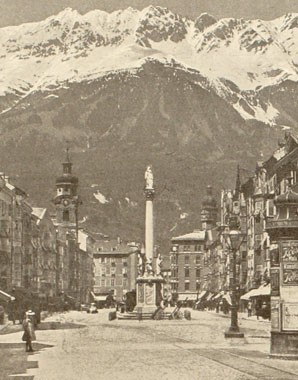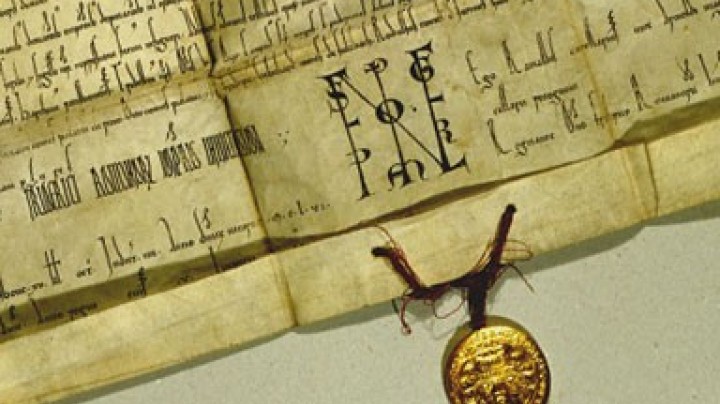How Frederick IV became Freddy Empty-Pockets
Frederick managed to work his way up from the deepest humiliation after his arch-enemy Sigismund of Luxembourg had had him outlawed and imprisoned. Under his rule Tyrol enjoyed a period of prosperity.
Frederick succeeded in effecting a dramatic escape from his prison, reportedly fleeing disguised in peasant's clothing and only revealing his true identity to his last remaining loyal followers when he reached Tyrol. This is the origin of the nickname ‘with the empty pockets’, as he had lost almost all of his reserves.
The Habsburg monarch only recovered his rulership over Tyrol with great difficulty. As a result of this crisis the Habsburg ancestral lands in the Aargau, including the family seat, were also lost to the Confederates.
However, through a combination of great persistence and enormous political skill, Frederick was gradually able to secure his position once again. In Tyrol he mainly gained support among the townspeople and farmers, whom he used as allies in the struggle against the nobility. Frederick was seen as the people's ruler, imposing a strict regime in Tyrol at the cost of the nobility. He succeeded in acquiring jurisdiction over the farmers from the nobility, placing them directly under the local ruler. The Tyrolean nobility – including the poet Oswald von Wolkenstein – had no choice but to accept.
Since this time farming communities and courts have had seats and votes in the Tyrolean Diet, a unique situation in the Austrian federal states and the source of the special sense of pride common to Tyrolean farmers. The Tyrolean farmers also played an active part in defending their region: it was during this period that the peasants' army of the Tiroler Schützen was created.
Frederick IV was the first Habsburg to reside permanently in Tyrol, establishing Innsbruck as his seat of residence in 1420. During the Late Middle Ages, Tyrol experienced an economic boom that is still evident in the artistic treasures from the late Gothic era that can be found throughout the region. It also profited from trade with Italy, for before overseas trade was introduced following the discovery of America, the link from the North to the South via the Inn Valley and the Brenner Pass constituted one of the most important trade routes in Europe.
Furthermore, in the fifteenth century mining for precious metals was in full swing in the Inn Valley. The silver deposits in Schwaz made it one of the most productive mines of the age, and, in fact, the town of Schwaz was in terms of population the second largest settlement in Austria, surpassed only by Vienna.
Frederick's nickname ‘Frederick of the Empty Pockets’ contrasts starkly (at least once he had regained his position of power) with his enormous wealth, which was based on the flourishing silver mines in Schwaz. At that time Frederick was the richest member of the family by a very long way.
Frederick married twice. His first wife, whom he married in 1406, was Elizabeth of the Palatinate (1381–1408), a daughter of Prince-Elector Rupert of the Palatinate, who had had himself proclaimed anti-king to Wenceslas of Luxembourg. Frederick thus positioned himself in the opposing camp to the Luxembourgs, one of the reasons that led to his later confrontation with Emperor Sigismund, who was once again finally able to consolidate the imperial title for his dynasty. In 1408 Elizabeth died giving birth to her first child, a girl, who was to follow her mother to the grave shortly afterwards.
Frederick’s second wife was Anne of Brunswick-Lüneburg (1390–1432), who bore Frederick’s successor Siegmund (1427–1496), destined to be the only surviving child of this marriage.
Frederick is buried in the Cistercian abbey at Stams in the Upper Inn Valley in Tyrol, in the crypt that he had built for himself, his wives and his offspring.














